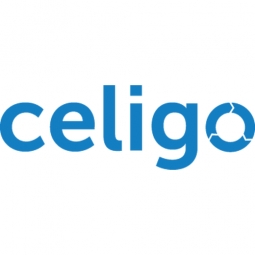下载PDF
WeTransfer Streamlines Enterprise Integration with Celigo
技术
- 应用基础设施与中间件 - 数据交换与集成
- 应用基础设施与中间件 - 中间件、SDK 和库
适用行业
- 建筑物
- 建筑与基础设施
适用功能
- 采购
- 销售与市场营销
用例
- 楼宇自动化与控制
- 租赁金融自动化
服务
- 系统集成
挑战
WeTransfer 是一家位于荷兰的互联网文件传输服务公司,其 SaaS 应用程序面临着重大挑战。该公司呈指数级增长,随着这种增长,各个部门收购了大量不同的应用程序。该公司拥有 200 多个付费 SaaS 应用程序,在整个业务的集成方面遇到了困难,导致许多部门(包括财务、人力资源和销售)出现重复和手动工作。该公司没有专门的团队进行企业系统集成,并且临时采购了许多工具,导致它们之间的交互很差。这对于财务部门来说尤其成问题,该部门在两年半的时间里花费了数百个小时构建了一套内部工具以及 Salesforce 和 NetSuite 之间的集成,但这些工具无法正常工作。这导致每月需要花费大量时间进行手动数据输入、财务帐簿关闭延迟以及计费周期不完整。
关于客户
WeTransfer BV 是一家总部位于荷兰、价值超过 1 亿美元的基于互联网的计算机文件传输服务公司。该公司的创建是为了共享大型文件,并已发展成为一个创意生产力工具的生态系统。 WeTransfer 已涉足广告和付费订阅双重收入模式,客户群主要集中在媒体和创意行业。该公司实现了指数级增长,将自己定位为创意的一体化工具。该公司拥有 400 多名员工,并且逐年呈指数级增长。
解决方案
WeTransfer 向 Celigo 寻求解决方案来解决其集成挑战。他们选择了 Celigo,而不是 Boomi 和 Mulesoft 等其他选项,因为它具有强大的功能、易于设置和使用、直观的设计以及预构建集成库。 Celigo 的定价模式也是一个决定因素,因为它允许 WeTransfer 连接多个端点,而无需按流量付费。该团队首先使用 Celigo 的指导实施计划解决了 Salesforce-NetSuite 集成挑战。此次集成的成功导致 Celigo 的使用扩展到许多其他业务领域,包括履行数据集成、数据仓库、Stripe、Paypal 等。该团队扩展到另外 12 个端点,包括额外的数据仓库和项目管理用例。借助 Celigo,WeTransfer 能够自动化数据仓库中的数据,而无需数据工程师。
运营影响
数量效益
相关案例.

Case Study
Energy Saving & Power Monitoring System
Recently a university in Taiwan was experiencing dramatic power usage increases due to its growing number of campus buildings and students. Aiming to analyze their power consumption and increase their power efficiency across 52 buildings, the university wanted to build a power management system utilizing web-based hardware and software. With these goals in mind, they contacted Advantech to help them develop their system and provide them with the means to save energy in the years to come.

Case Study
IoT System for Tunnel Construction
The Zenitaka Corporation ('Zenitaka') has two major business areas: its architectural business focuses on structures such as government buildings, office buildings, and commercial facilities, while its civil engineering business is targeted at structures such as tunnels, bridges and dams. Within these areas, there presented two issues that have always persisted in regard to the construction of mountain tunnels. These issues are 'improving safety" and "reducing energy consumption". Mountain tunnels construction requires a massive amount of electricity. This is because there are many kinds of electrical equipment being used day and night, including construction machinery, construction lighting, and ventilating fan. Despite this, the amount of power consumption is generally not tightly managed. In many cases, the exact amount of power consumption is only ascertained when the bill from the power company becomes available. Sometimes, corporations install demand-monitoring equipment to help curb the maximum power demanded. However, even in these cases, the devices only allow the total volume of power consumption to be ascertained, or they may issue warnings to prevent the contracted volume of power from being exceeded. In order to tackle the issue of reducing power consumption, it was first necessary to obtain an accurate breakdown of how much power was being used in each particular area. In other words, we needed to be able to visualize the amount of power being consumed. Safety, was also not being managed very rigorously. Even now, tunnel construction sites often use a 'name label' system for managing entry into the work site. Specifically, red labels with white reverse sides that bear the workers' names on both sides are displayed at the tunnel work site entrance. The workers themselves then flip the name label to the appropriate side when entering or exiting from the work site to indicate whether or not they are working inside the tunnel at any given time. If a worker forgets to flip his or her name label when entering or exiting from the tunnel, management cannot be performed effectively. In order to tackle the challenges mentioned above, Zenitaka decided to build a system that could improve the safety of tunnel construction as well as reduce the amount of power consumed. In other words, this new system would facilitate a clear picture of which workers were working in each location at the mountain tunnel construction site, as well as which processes were being carried out at those respective locations at any given time. The system would maintain the safety of all workers while also carefully controlling the electrical equipment to reduce unnecessary power consumption. Having decided on the concept, our next concern was whether there existed any kind of robust hardware that would not break down at the construction work site, that could move freely in response to changes in the working environment, and that could accurately detect workers and vehicles using radio frequency identification (RFID). Given that this system would involve many components that were new to Zenitaka, we decided to enlist the cooperation of E.I.Sol Co., Ltd. ('E.I.Sol') as our joint development partner, as they had provided us with a highly practical proposal.

Case Study
Intelligent Building Automation System and Energy Saving Solution
One of the most difficult problems facing the world is conserving energy in buildings. However, it is not easy to have a cost-effective solution to reduce energy usage in a building. One solution for saving energy is to implement an intelligent building automation system (BAS) which can be controlled according to its schedule. In Indonesia a large university with a five floor building and 22 classrooms wanted to save the amount of energy being used.

Case Study
Powering Smart Home Automation solutions with IoT for Energy conservation
Many industry leaders that offer Smart Energy Management products & solutions face challenges including:How to build a scalable platform that can automatically scale-up to on-board ‘n’ number of Smart home devicesData security, solution availability, and reliability are the other critical factors to deal withHow to create a robust common IoT platform that handles any kind of smart devicesHow to enable data management capabilities that would help in intelligent decision-making

Case Study
Splunk Partnership Ties Together Big Data & IoT Services
Splunk was faced with the need to meet emerging customer demands for interfacing IoT projects to its suite of services. The company required an IoT partner that would be able to easily and quickly integrate with its Splunk Enterprise platform, rather than allocating development resources and time to building out an IoT interface and application platform.






